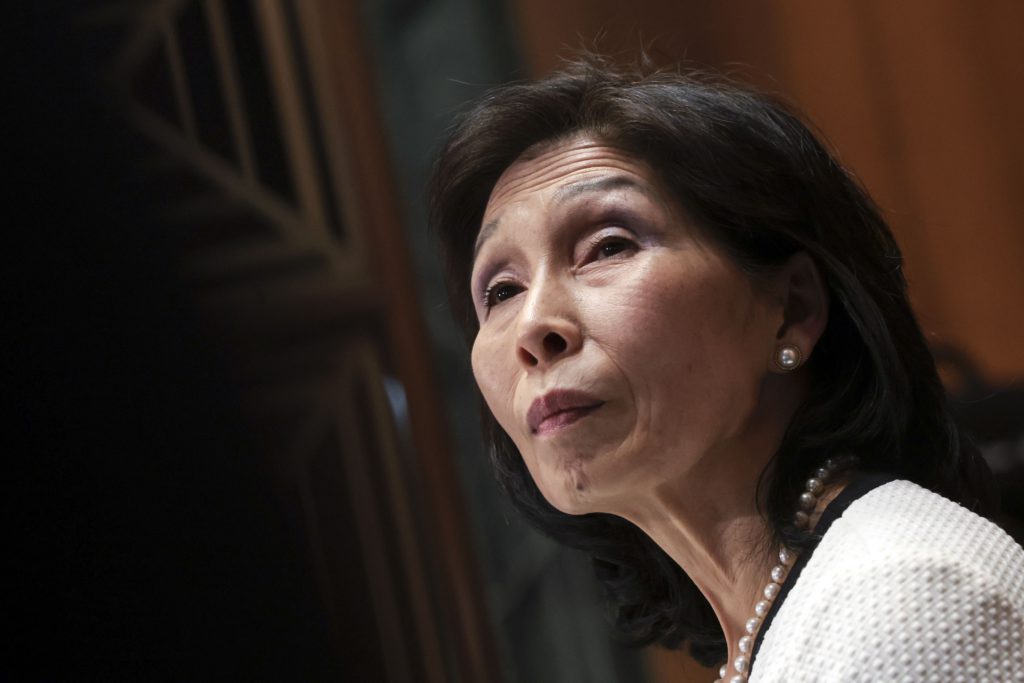(Bloomberg) — A top U.S. Treasury official said the Biden administration and members of Congress are making progress toward crafting guardrails for fast-growing stablecoins, which U.S. officials have warned could pose systemic dangers.
The Treasury is working with Congress on various proposals, according to Nellie Liang, the department’s undersecretary for domestic finance. There’s “broad agreement” that risks posed by stablecoins need to be addressed — especially given the growth of the market, she said.
“I’m confident we’ll reach some consensus around some of these proposals,” Liang said Tuesday at a conference in Washington hosted by the National Association for Business Economics.
In November, the Treasury and a group of federal agencies appealed to Congress to act to address “key gaps” in regulatory authority over stablecoins. They urged legislators to require that stablecoin issuers become insured depository institutions, subjecting them to oversight from banking regulators.
Stablecoins are a fast-growing type of cryptocurrency whose value is pegged to another asset, like a traditional currency or commodity. Most, like Tether, the largest, are pegged to the U.S. dollar. The outstanding value of all stablecoins has grown to more than $175 billion from about $5 billion in 2020, Liang said.
Digital Dollar
Liang also commented on the potential for a digital dollar, noting more than once in the panel discussion that the Federal Reserve’s plans for a real-time payments system may provide some of the benefits that advocates hope to see from a central bank digital currency — and with built-in protections for the financial system.
The coming system, known as FedNow, aims to make inexpensive, near-instant interbank payments available 24 hours a day, 365 days a year, before the end of 2023. That could make bank accounts more useful and attractive to the estimated 5% of U.S. households that currently don’t have accounts.
“Because FedNow relies on the banking system, there already are safeguards for consumers and businesses,” Liang said. “Bank-based money usually has deposit insurance and banks are generally eligible to obtain access to the lender of last resort. These two backstops help to ensure that bank money is not runnable.”
President Joe Biden signed an executive order earlier this month that directed a number of federal agencies to devote more attention to the study and prospective regulation of digital assets. It placed the “highest urgency” on the research, development and design of a potential U.S. central bank digital currency and directed the Treasury to report on the implications of a CBDC within 180 days.
China’s Yuan
A digital U.S. dollar would represent a direct liability of the Fed, similar to paper currency — making it distinct from the bank deposits that Americans already use widely to make electronic interbank payments. Advocates claim it will help defend the primacy of the dollar in cross-border commerce and make cheap digital payments services more accessible to lower-income Americans.
Both Liang and Hyun Song Shin, the head of research at the Bank for International Settlements, suggested in the panel discussion that there was little concern about competition from China’s digital yuan, known as the e-CNY, in the context of the global financial system.
Shin said he was “a little bit skeptical that the e-CNY itself is going to make a big impact. Nor do I think it was designed with the use outside China in mind. The way that the e-CNY was promoted was primarily a way for the central bank to reclaim the public square from the large big-tech players,” he said, referring to the Alipay and WeChat Pay digital-payments systems.
“Technology is a feature of currency, but it’s not why people migrate to the use of a currency,” Liang said. “The value of the dollar is based in the core of the U.S. — the rule of law, the institutions, the depths of the financial markets, protections of privacy.”
More stories like this are available on bloomberg.com
©2022 Bloomberg L.P.











